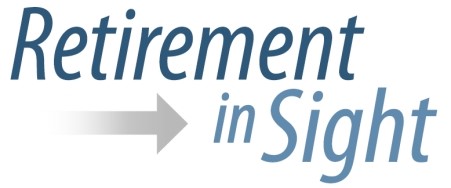 Monthly News and Information for Current and Future Retirees
Monthly News and Information for Current and Future Retirees
Presented by Polley Financial Group – MAY 2020
QUOTE OF THE MONTH
“Reputation is what other people know about you. Honor is what you know about yourself.”
LOIS MCMASTER BUJOLD
HOW SHOULD PRE-RETIREES VIEW ILLIQUID ASSETS?
Some people approach their retirement years owning illiquid assets worth more than their liquid ones. While long-held illiquid assets, such as a business or home, may become highly valued or appreciated over time, it can be wise to be frank and conservative when estimating their worth, especially if an owner wants to sell them to help fund their “second act.”
It may take months or years to sell an illiquid asset. Moreover, the process of selling that asset often involves expenses: payments to third parties facilitating the transaction, upgrades, or concessions to a new owner, moving costs, and legal fees. A pre-retiree can view a future home or business sale with optimism, but that optimism may be tempered by these realities when the time comes. In addition, liabilities linked to illiquid assets may persist well into retirement; according to Federal Reserve data published in 2019, 68% of the debt of Americans is rooted in homeownership. If you are considering what the sale of an illiquid asset might do for your financial future, think about how to position your more liquid investments. Liquidity is a financial plus at any stage of life, and especially, during retirement.1
 GOLF TIP
GOLF TIP
Why not leave the flagstick in?
As courses have opened back up across the country, many are urging golfers to leave the flagstick in the hole when they reach the green. (In fact, some have substituted pool noodles for flagsticks.) If the ball hits the flagstick (or pool noodle), the chip or putt “goes in,” no penalty. You can help to reduce the risk of COVID-19 transmission by simply keeping flagsticks out of your hands.
Source: progolfnow.com, March 20, 2020
WHAT WOULD WE LIKE TO DO WHEN WE HAVE THE CHANCE AGAIN?
As most of the nation contended with stay-at-home orders this spring, polling firm YouGov decided to survey 1,175 American adults to see what activities they might want to do once businesses fully reopen and social-distancing mandates end.
The big picture? Baby boomers, and to a lesser degree, Gen Xers, appeared to be more confident than millennials about resuming certain kinds of popular pursuits. As an example, 61% of boomers and 50% of Gen Xers who responded to the April 24-27 survey said that they would visit friends or family that they hadn’t seen since the beginning of social distancing, compared to 47% of millennials. Sixty-four percent of boomers and 52% of Gen Xers said that they would be up for going to bars and cafes once lockdowns ended; only 42% of adults born between 1982-99 put that activity on their list. While only 32% of millennials and 33% of Gen Xers said that they would visit a hairstylist or barber right after the end of a stay-at-home order, 50% of baby boomers indicated that they would do so. Forty-six percent of baby boomers longed to make in-person shopping trips to stores or malls, compared to 37% of Gen Xers and 35% of millennials.2

DID YOU KNOW?
France’s most famous landmark was rejected by Spain
Gustave Eiffel originally proposed constructing his landmark tower in Barcelona. Civic leaders thought the design was unappealing and turned his plan down. Afterward, Eiffel approached Paris and got the go-ahead. The Eiffel Tower was completed in time for the city’s 1889 International Exposition. Interestingly, it was intended as a temporary attraction.3
ON THE BRIGHT SIDE
Thanks to the Coronavirus Aid, Relief, and Economic Security (CARES) Act, you may deduct up to $300 in qualified charitable contributions made during 2020 on next year’s federal tax return. This applies even if you aren’t itemizing deductions for 2020. Remember, this tip is for informational purposes; it’s not a replacement for real-life advice. Make sure to consult your tax, legal, and accounting professionals before modifying your strategy.4
 BRAIN TEASER
BRAIN TEASER
A non-Newtonian fluid, this household item originally contained 65% dimethylsiloxane, 17% silica, 9% thixatrol ST, 4% polydimethylsiloxane, 1% decamethylcyclopentasiloxane, 1% glycerine, and 1% titanium dioxide. Scientists happened upon it during World War II. Today, it is found in many grocery stores (though you probably don’t want to eat it). What is it?
STUMPED? CALL 480-921-7706 FOR THE ANSWER!
This material was prepared by MarketingPro, Inc., and does not necessarily represent the views of the presenting party, nor their affiliates. This information has been derived from sources believed to be accurate. The publisher is not engaged in rendering legal, accounting or other professional services. If assistance is needed, the reader is advised to engage the services of a competent professional. This information should not be construed as investment, tax or legal advice and may not be relied on for the purpose of avoiding any Federal tax penalty.
CITATIONS.
1 – Brookings.edu, June 25, 2019
2 – Benzinga, May 5, 2020
3 – Reader’s Digest, May 6, 2020
4 – Forbes.com, April 8, 2020
Polley Financial Group
4500 South Lakeshore Drive, Suite 300
Tempe, Arizona 85282
Phone: 480-921-7706
Fax: 877-577-7706
Located inside: 2799 S 4th Ave
Yuma, Arizona 85365
Phone: 928-782-7706
Fax: 877-577-7706
